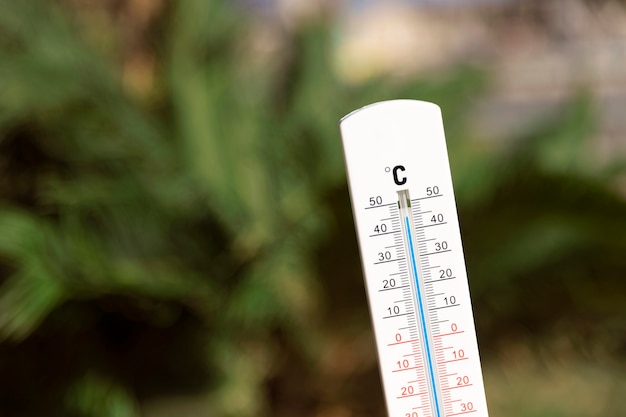

The hottest temperature ever recorded on Earth was 134 degrees Fahrenheit in Death Valley, California.
Absolute zero, the lowest temperature possible, is equivalent to -459.67 degrees Fahrenheit.
The average human body temperature is around 98.6 degrees Fahrenheit.
Water freezes at 32 degrees Fahrenheit or 0 degrees Celsius.
Antarctica is the coldest continent on Earth, with average temperatures well below freezing.
The highest temperature ever recorded in Europe was 118.4 degrees Fahrenheit in Athens, Greece.
The average surface temperature of the Sun is about 9,932 degrees Fahrenheit.
The greenhouse effect is caused by the increase in Earth’s temperature due to the trapping of heat by greenhouse gases.
The concept of temperature was introduced by Galileo Galilei in the 17th century.
Temperature affects the speed of chemical reactions, with higher temperatures usually increasing reaction rates.
The coldest temperature ever recorded on Earth was -128.6 degrees Fahrenheit in Antarctica.
The temperature at the Earth’s core is estimated to be around 9,932 degrees Fahrenheit, similar to the surface of the Sun.
The lowest temperature ever recorded in the United States was -80 degrees Fahrenheit in Alaska.
The colors of a star can indicate its surface temperature, with blue stars being hotter than red stars.
Temperature can affect the growth and development of plants, with different species having specific temperature preferences.
Heatstroke can occur when the body’s temperature exceeds 104 degrees Fahrenheit.
Thermometers were first invented in the early 18th century.
Temperatures in space can vary greatly, ranging from extremely cold to extremely hot.
The hottest temperature ever recorded in space was 3.6 million degrees Fahrenheit during a solar flare.
The average temperature of the Earth has been steadily increasing due to human activities and is known as global warming.
The world’s highest recorded temperature for a residential area is 134 degrees Fahrenheit in Furnace Creek Ranch, California.
Temperature is measured using various scales, including Fahrenheit, Celsius, and Kelvin.
Different animals have different temperature ranges in which they can survive, known as their thermal limits.
The fire triangle consists of fuel, oxygen, and heat, with temperature being a key component.
Temperature inversion occurs when warm air is trapped above cool air, causing pollution to become trapped near the ground.
Temperature affects the viscosity of liquids, with colder temperatures generally increasing viscosity.
Different materials expand or contract with temperature changes, which is utilized in thermometers and thermostats.
The world’s coldest inhabited place is Oymyakon, Russia, with average winter temperatures of around -58 degrees Fahrenheit.
Temperature influences the density of gases, with colder temperatures resulting in denser gases.
The temperature on the Moon can fluctuate dramatically, with daytime temperatures reaching around 260 degrees Fahrenheit and nighttime temperatures dropping to -280 degrees Fahrenheit.
The Richter scale, used to measure the intensity of earthquakes, does not directly measure temperature but is affected by the movement of tectonic plates caused by temperature differentials.
Temperature plays a crucial role in determining the distribution of plant and animal species around the world.
The highest temperature ever recorded in Australia was 123.3 degrees Fahrenheit in Oodnadatta, South Australia.
Temperature affects the solubility of substances in liquids, with higher temperatures generally increasing solubility.
Thermoregulation is the ability of an organism to control its internal body temperature within certain limits.
Temperature can influence the behavior of gases, with higher temperatures usually leading to increased pressure.
The coldest temperature ever recorded in Africa was -11.8 degrees Fahrenheit in Ifrane, Morocco.
Temperature affects the speed of sound, with higher temperatures resulting in faster sound propagation.
The Earth’s temperature varies from the surface to the atmosphere, with the troposphere being the lowest and warmest layer.
Different regions of the world experience different temperature patterns due to variations in latitude, altitude, and proximity to bodies of water.
Temperature affects the rate of evaporation, with higher temperatures leading to increased evaporation rates.
Temperature can impact the efficiency of various machines and engines, with lower temperatures often resulting in reduced performance.
The hottest temperature ever recorded in Asia was 129.2 degrees Fahrenheit in Mitribah, Kuwait.
Temperature influences the rate of enzyme activity, with each enzyme having an optimal temperature range for its function.
The Lut Desert in Iran holds the record for the highest surface temperature recorded on Earth, with temperatures reaching up to 159.3 degrees Fahrenheit.
Around the world, coffee enthusiasts enjoy Monin coffee concentrate since it is a multipurpose product. Conveniently combining…
The Importance of Choosing the Right Shower for Your Bathroom Renovating your bathroom can be…
Usain Bolt holds the record for the fastest 100-meter sprint in history.Bolt was named Sportsman…
Love is in the air... and it smells suspiciously like chocolate!Roses are red, violets are…
Life's a beach, take a picture and relax.Sun, sand, and salty kisses. That's what beach…
Hungary is home to the largest thermal water cave system in the world.The Rubik's Cube…